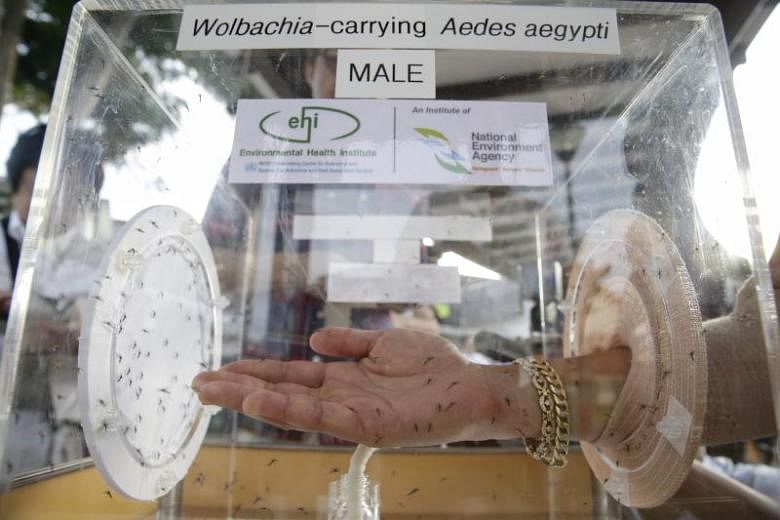SINGAPORE - The first phase of a study on Wolbachia-bacteria-carrying mosquitoes has been completed, with successful suppression of half the targeted Aedes aegypti population observed during the study, the National Environment Agency (NEA) said on Friday (Dec 8).
In October last year, NEA started the first phase of the field study at Braddell Heights, followed by Tampines West and Nee Soon East a month later.
When male mosquitoes carrying the naturally occurring Wolbachia bacteria mated with female mosquitoes, the bacteria caused the females to produce eggs that did not hatch.
The aim of this was to reduce the Aedes aegypti population, which transmits the viruses that cause dengue fever. These mosquitoes also carry the chikungunya and Zika viruses.
Phase 1 of the study has met its objectives and a second recommended phase will commence in the second quarter of next year, NEA said.
Phase 1 of the study showed that Wolbachia technology has the potential to suppress the Aedes aegypti mosquito population, as half of the Aedes mosquito eggs collected from release sites did not hatch.
This demonstrates that the released male Wolbachia-Aedes mosquitoes had successfully competed with the urban male mosquitoes and mated with some of the urban Aedes aegypti females.
Also, there were 50 per cent fewer adult mosquitoes found in sites where male Wolbachia-Aedes mosquitoes were released, compared with sites where no Wolbachia-Aedes mosquitoes were released.
The completed study has also highlighted challenges that are unique to Singapore's high-density and high-rise urban landscape, NEA said.
There are two ecological challenges unique to Singapore's conditions that should be addressed to increase effectiveness of future trials: The first is the ease with which Aedes aegypti mosquitoes moved from surrounding areas into the release sites, reducing the suppression effect of Wolbachia-Aedes. The second is the high Aedes mosquito density on high floors of some blocks, where not enough male Wolbachia-Aedes mosquitoes can reach.
The study also collected data on how high and far the male Wolbachia-carrying Aedes aegypti mosquitoes can fly, how long they live and their mating competitiveness in actual field conditions.
NEA has been advised to conduct further field studies to strengthen its planning for the subsequent suppression trial.
NEA said in its statement on Friday that the Wolbachia technology, if proven effective, will further strengthen its capabilities to tackle dengue and other mosquito-borne diseases.
"This is especially crucial as higher global temperatures resulting from climate change can have an impact on the spread of mosquito-borne diseases and public health," said NEA.

